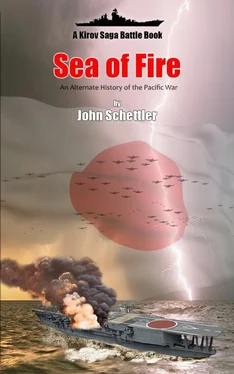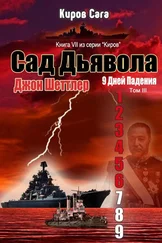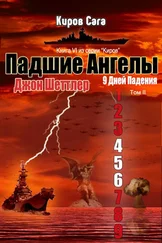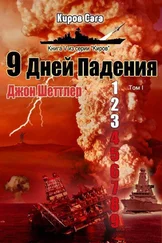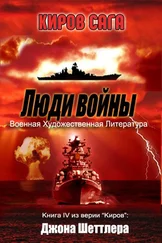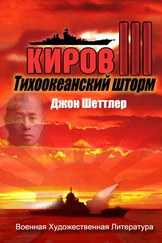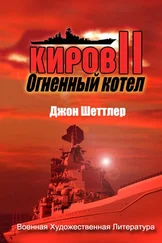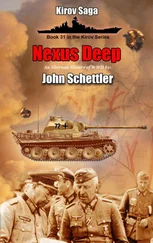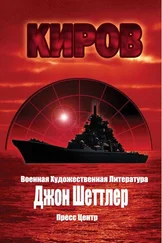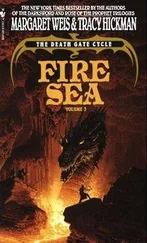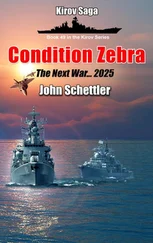It was days before any of them could truly internalize what had happened, but it was only hours after that sighting before they were sitting in the officer’s wardroom with a very uncomfortable question before them. Brigadier Kinlan did not have to deal with this last inconvenience when his 7th Brigade appeared in the Western Egyptian desert. With the help of Fedorov, and the evidence of his own eyes, he had been eased over the line and knew where he could take his place on the battlefield. It wasn’t long before he was sharing a brandy with Churchill over the matter, and there was never any question in his mind like the one now plaguing the officers of the Takami .
It was something the Russians aboard Kirov had to answer when they arrived, a very thorny question indeed. If all of this were true, these ships, the men on them, the news on the radio, then they were right in the middle of the Second World War! If it were true, if they were really sailing in the Java Sea of 1942, then who’s side were they on here? They were sitting on a ship with the power to do what Kirov had been about for all these many long months. They were sitting on an Atago Class Guided Missile Destroyer, laid down in 2015.
The first two ships in the original class, Atago and Ashigara , had been commissioned in 2007 and 2008 respectively. His ship was a new, improved model, state of the art, and arguably one of the best fighting ships in the world when it was commissioned in 2021, just after its sister ship Takari entered service the previous year. Both were in the new 27DD subclass for the Atago Class, that number being the chosen because the first would be launched in the 27th year of the current ruling Emperor Akihito. Takimi was the latest and greatest.
There was a reason why General Imamura had thought he was rescued by a cruiser, because in spite of the name, that was the real weight class Takami fought in. DDG-180 was over 8600 tons when empty, and was now just over 11,000 tons fully loaded. And aside from her crew and supplies, much of that extra weight was sheer muscle for the mission of modern era naval combat. A variant of the American built Aegis Ticonderoga Class Cruiser, the ship had a sensor suite second to none, with the AN/SPY1D(V) phased array radar, along with the AN/SQQ-89 Sonar system.
Were they to come on the scene of a typical WWII sea engagement such as that fought recently in the Java Sea, they could not only accurately track the course and speed of every ship, but also of every round being fired, right down to the level of machine gun bullets. The sensors were so good that they could even tell you whether or not an 8-inch shell that had just been fired was going to hit its intended target.
Primarily an anti-air/fleet defense ship, Takami had two Mk 41 VLS Modules, with 64 cells on her forward deck, and another 32 on the superstructure above the helo bay aft. Those cells could mount canisters of several missile types, mostly US developed systems. There was the RIM-66, also known as Standard Missile 2, (SM-2), which was the ship’s primary SAM for air and missile defense. For ballistic threats, there were cells mounting the RIM-161, Standard Missile 3. These two systems paralleled the British Aster 15 and 30 systems installed aboard Argos Fire .
For submarine defense, Takami could also fire the RUM-139 ASROC guided rocket torpedo from its VLS cells, and against other warships a separate system mounted Japan’s latest indigenous SSM project, known as the Type 12 Anti-Ship Missile. Weighing 720kgs, it could push a 300kg warhead out to a range of 200 kilometers at high subsonic speeds. It wasn’t as good as anything the Russians had, but it was nonetheless deadly against any modern ship it might hit. The forward deck mounted a Mark 45 (Mod 4) 5-inch naval gun that could range out 56 kilometers, and the ship also had two triple torpedo tubes to either side amidships, with the Type 68 (Mark 32) 324mm torpedo.
For close in defense, the ship had the very latest in weapons development from native Japanese industry, the long awaited JAX-Heisei-27 Naval Rail Gun system, and the combat ready TR-D1 Laser CIWS system to go along with the two older Phalanx gun systems for close in defense. That rail gun was a new evolutionary leap in thinking and application for naval gunnery. Its main role was not to stand in as a heavy anti-ship battery, but a lighter, quick firing anti-air and missile defense gun. It could fire a 23lb projectile at the dizzying speed of Mach 7, and out to a range of 110 nautical miles, or just over 200 kilometers. There was no explosive warhead at all, but at that speed, a projectile of that weight would deliver 23 mega joules of impact energy to any target it hit.
By comparison, the 16-inch guns on an Iowa class battleship would deliver about 160 mega joules when they hit, so the rail gun was not something designed to go through heavy armor. Against light skinned missiles, planes, or even ships, it could still be lethal, and the round it fired was virtually unstoppable by any other CWIS system of the day. Considering Takami ’s brilliant situational awareness in the sensors it employed, the lightning quick efficiency of its computers, the ship was not one any sane sea Captain would ever want to tangle with.
And there it was, in the Makassar Strait off Balikpapan, in 1942, with cruisers, destroyers and transports of the Imperial Japanese Navy on every side, and a flag fluttering over Takami’s aft gunwale that bore the image of the rising sun.
“Alright,”said the Captain. “We’ve been round and round on this, and nothing any of us have said will change the fact that most every ship we’ve seen out here should have been sunk or scrapped long ago. We can either believe it, or just say we’re all lunatics, but for the sake of this discussion, let’s just assume it is true.”
The ship’s senior officers were all gathered in the wardroom. First Officer Kenji Fukada sat next to the Captain, a steady figure of efficiency. With a logical mind and calm demeanor, the unsettling nature of the last 36 hours was weighing on him heavily. Many of the men had little or no sleep, and the tension on the ship was wound up fairly tight. The news had been hard for a man of his disposition to swallow, but he nonetheless harbored a secret delight in the thought that the ship models he had doted over as a boy, and still treasured as a navy man, had become real things on the seas not 20,000 meters off their starboard bow—as big as life.
Senior Lieutenant Hedeo Honjo, CIC Chief, was also in attendance, his implacable presence reassuring. A heavy set, thick necked man beneath short cropped hair, Honjo had a bullish aspect about him, and the temperament of a sumo wrestler. He was a distant relative of Shigeru Honjo, former commander of the Kwantung Army during the Mukden incident that led to the Japanese invasion of Manchuria, and a man who had been a close confidant of the infamous proponent of the “Strike North” strategy, Sadao Araki.
Junior Lieutenant Koji Nakano was a 22 year old wiry young man watching the Sonars on the ship. No legends surrounded him. He was not ever thought to have the ‘best ears in the fleet’ as Alexi Tasarov was aboard Kirov . He didn’t need the best ears in the fleet, he simply had the best sonar, and serviced radar systems that were second to none.
Nakano would team up with Senior Lieutenant Ryoko Otani, the senior ranking female on the regular bridge crew, and the eyes behind the screens of that AN/SPY-1 Phased Array Radar. Women in the navy first started exclusively as nurses, then moved to communications positions. A very few reached higher ranks of command, and women still made up no more than 6% of the SDF. Otani represented them well, a bright, intelligent woman who was well liked and often noticed by the other male officers. Her father was a navy Captain on a helicopter destroyer, so they minded their manners, but Lieutenant Otani could fend for herself in the largely male dominated seas, and it was her keen eye and radar systems that led the ship through these waters now.
Читать дальше
